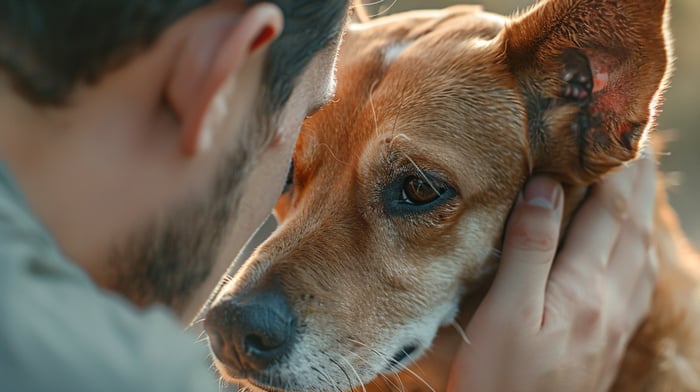Science Behind Dog Attacks: Aggressive Behavior in Pets
Exploring Causes of Fatal Dog Attacks

Exploring Causes of Fatal Dog Attacks
Understanding the reasons behind dog attacks is crucial not only for pet owners but also for the general public. By delving into the science of canine behavior, we can uncover the complex factors that contribute to these unfortunate incidents and explore strategies for prevention. Aggressive behavior in dogs is often influenced by a combination of genetic predispositions, early socialization experiences, and environmental factors. Additionally, the context in which a dog perceives threats, such as territorial disputes, fear, or pain, can significantly impact its likelihood of aggression. By examining these elements, we can gain insights into the warning signs of potential aggression and implement measures to reduce the risk of attacks. This exploration not only helps in making informed decisions about dog ownership and training but also promotes a safer environment for both humans and pets.

What Are The Common Triggers For Dog Attacks On humans?
Dog Attack on humans can occur due to various triggers such as fear, protection instincts, or even the frustration of being restrained or confined. Situations that might cause a dog to feel threatened, like an unfamiliar person approaching them suddenly, are common triggers. Additionally, environmental stimuli like other animals or loud noises can provoke an attack (Vet Advises).
How Many Attacks Occur Annually And What Trends Are evident?

The frequency of dog attacks has shown worrying trends. According to data from the CDC, fatal dog attacks in the U.S. have seen a significant rise from an average of about 40 annually to nearly 100 post-pandemic. This increase correlates with the surge in dog adoptions during the pandemic, which, combined with insufficient training and socialization, likely contributed to this rise.
It's estimated that millions of dog bites occur annually in the United States alone, with a significant number requiring medical attention. Trends indicate that while dog ownership is on the rise, the percentage of serious attacks has remained somewhat consistent, thanks to better awareness and training resources (PetsRadar).
Which Breeds Are Most Often involved?

While any dog can become aggressive if provoked, certain breeds appear more frequently in attack statistics due to factors like size, strength, and the circumstances under which they are kept. Historically, breeds such as Pit Bulls and Rottweilers are commonly associated with fatal attacks, but this data requires careful interpretation to consider factors like population numbers and conditions of upbringing (livescience.com).
What Environmental Factors Contribute To A Dog's Aggressive behavior?
A dog’s aggression can be significantly influenced by their environment. Factors such as early socialization, training, living conditions, and the behavior of their owners play crucial roles. Dogs that are isolated, chained, or poorly socialized are more prone to develop aggressive behaviors (Vet Advises).
According to veterinary advice and behavioral studies, the following key elements significantly impact a dog's propensity for aggressive behavior:
- Early Socialization: It is critical for a dog's development. Puppies that are not exposed to diverse experiences and stimuli during their formative months may struggle with fear and anxiety, leading to aggressive responses.
- Training and Behavioral Management: Training plays a fundamental role in shaping a dog's behavior. Positive reinforcement training methods help dogs learn acceptable behaviors and build healthy relationships with their owners. In contrast, the use of aversive or punitive training techniques can foster fear and aggression.
- Living Conditions: A dog’s living environment greatly influences its behavior.
- Owner Behavior and Interaction: The behavior and attitude of dog owners are crucial in determining a dog's behavioral outcomes.
- Socialization with Other Animals: A dog’s interactions with other animals also play a significant role in its behavior.
- Health Issues: Medical issues can impact a dog’s behavior. Dogs experiencing pain, illness, or discomfort may become irritable or aggressive.
- Changes in Environment: Environmental changes, such as moving to a new home, alterations in the household dynamic, or the introduction of new pets or people, can stress a dog and potentially lead to aggression.
- Human-Dog Interactions: The nature of interactions between humans and dogs can influence aggression.
How Do Owner Behaviors Influence The Likelihood Of Dog attacks?
Owner behavior has a profound impact on a dog’s aggression levels. Inconsistent training, harsh discipline, or neglect can foster aggressive tendencies in dogs. Conversely, positive reinforcement and structured training can help mitigate these behaviors and reduce the likelihood of attacks (PetsRadar).
Are Certain Demographics More Likely To Be Victims In Fatal Dog attacks?
Statistically, children and the elderly are more vulnerable to dog attacks. This vulnerability can be due to a lack of physical ability to fend off an attack or misinterpretation of dog signals. Additionally, smaller body size in children can lead to more severe outcomes in aggressive encounters (livescience.com).
What Preventive Measures Can Reduce The incidence?
Preventive measures include responsible pet ownership practices such as regular training, socialization, and ensuring pets are safely secured. Community education about how to interact safely with dogs and the importance of spay and neuter programs are also vital for reducing attacks (Vet Advises).
How Have Laws And Regulations Changed In Response To Fatal Attacks On people?
In response to rising incidents, many jurisdictions have tightened laws concerning dog ownership. Many local and national governments have enacted breed-specific legislation, mandatory registration, and stricter penalties for owners of dogs that attack. These laws aim to not only penalize negligence but also encourage responsible pet ownership and community safety (PetsRadar).
The Importance of Dog Longevity
Ensuring the long-term health and well-being of dogs is crucial. A healthy, well-socialized dog is less likely to exhibit aggressive behavior. Longevity in dogs is not just about a longer life but ensuring a quality life filled with good health and behavior.
- Understanding Dog Longevity: Learning about dog longevity helps us understand how to care for our pets better so they can live longer, healthier lives.
- Health and Wellness: Knowing the factors that affect a dog's life span, like diet, exercise, and regular vet visits, can help us make better choices for them.
- Bonding Time: The longer our dogs live, the more time we have to create memories and strengthen our bond with them.
- Preventive Care: Learning about dog longevity teaches us the importance of preventive care, which can help avoid diseases and other health issues later in their lives.
- Overall Happiness: Healthier dogs are happier dogs, and understanding how to extend their lives can lead to a more joyful and fulfilling relationship for both pet and owner.
Calming Hemp Chews

Calming Hemp Chews

$59.95
$69.90
7 Key Ingredient Formula: Hemp Seed Oil Hemp Seed Meal Chamomile Valerian Root Passion Flower Ginger Root L-Tryptophan … read more
 SUCCESS!
SUCCESS!






